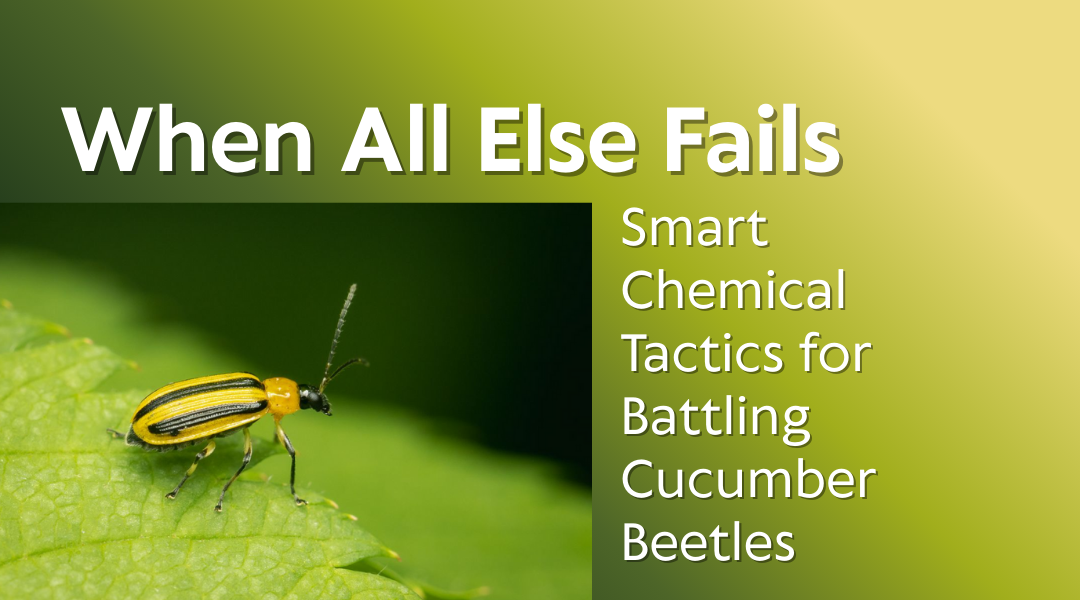Sometimes organic methods just don’t cut it against a full-blown cucumber beetle invasion. After watching those striped devils decimate my zucchini patch three summers ago, I learned when and how to use chemical controls responsibly. Here’s the straight talk on pesticide options that actually work, minus the jargon.
The “Less Evil” Choices
These are my go-to options when beetles cross the line:
- Pyrethrin (the flower power punch)
- Derived from chrysanthemums
- Knocks beetles flat within hours
- Breaks down fast (won’t linger in your soil)
- Pro tip: Spray at dusk to avoid hitting bees
- Neem Oil (nature’s bug birth control)
- Messes with their ability to eat and reproduce
- Needs reapplying after rain
- My evening ritual during peak beetle season
- Spinosad (bacteria’s revenge)
- Works great if you catch larvae early
- Less harmful to beneficials than most chemicals
- Found in products like Captain Jack’s Deadbug
The Heavy Artillery
Reserve these for when you’re truly under siege:
- Permethrin – Works fast but deadly to fish and bees (I only use this as a last resort on non-flowering plants)
- Carbaryl (Sevin) – The nuclear option (kills everything, including your helpers)
- Systemics like Imidacloprid – Works from inside the plant but can linger (never use on flowering crops)
What Actually Works in Practice
From my trial-and-error:
- Diatomaceous earth is great for seedling protection (dust it on dry leaves)
- Pyrethrin + neem oil combo works better than either alone
- Systemics should only be used early before flowering starts
The Rules I Live By
- Always spot treat instead of blanket spraying
- Never spray when flowers are open
- Rotate products to prevent resistance
- Follow the label like it’s the Bible
A Cautionary Tale: My neighbor nuked his garden with Sevin last June. Sure, it killed the beetles – along with all the ladybugs and lacewings. By August, his plants were hit with every pest imaginable.
The Bottom Line: Chemicals have their place, but use them like a sniper – precise, calculated, and only when absolutely necessary. Your garden’s ecosystem will thank you.
